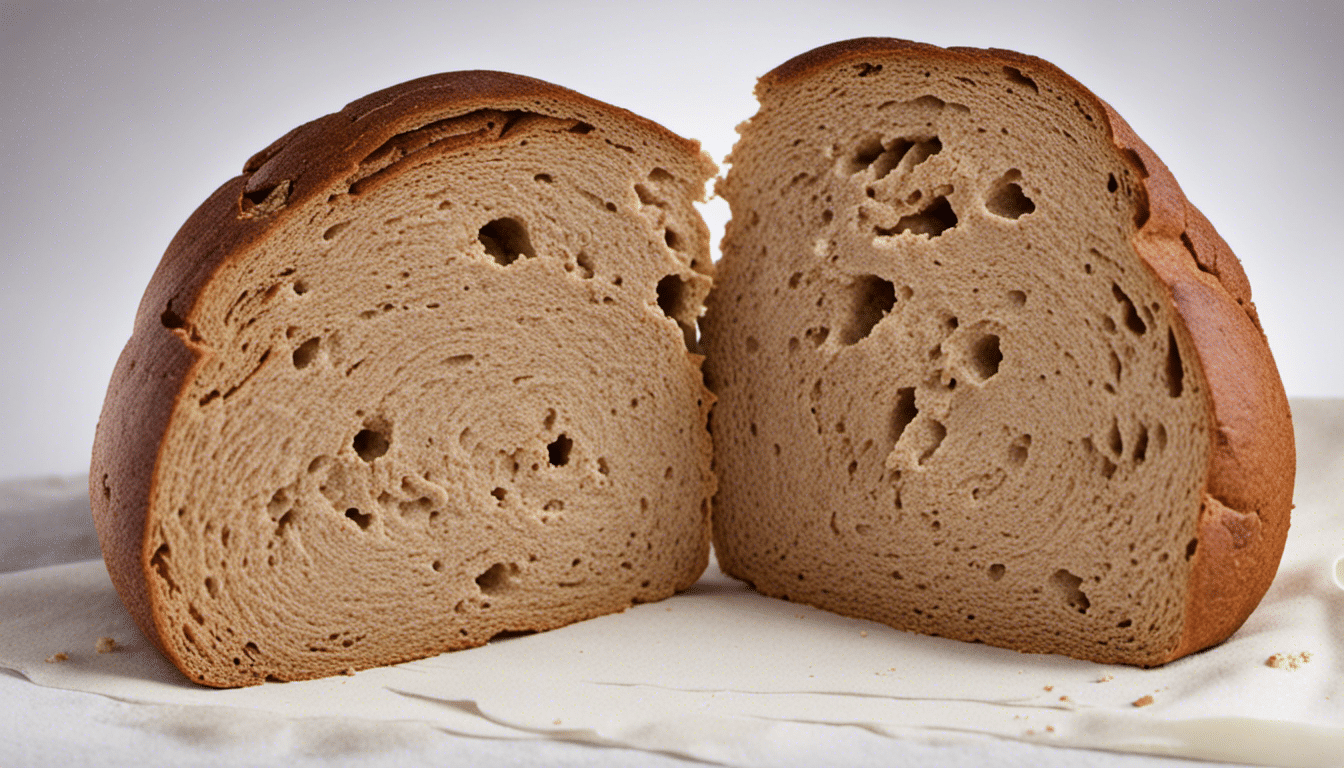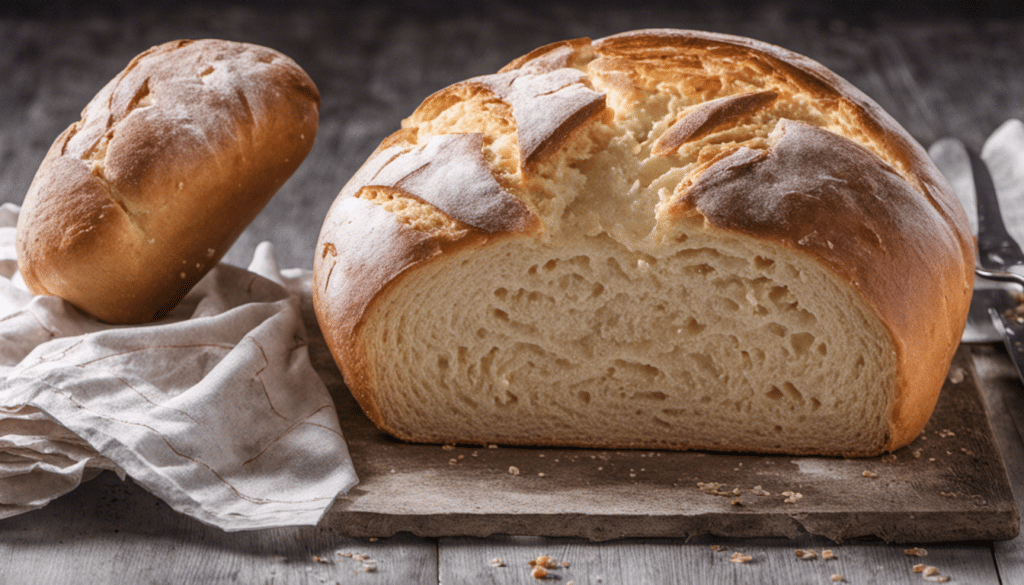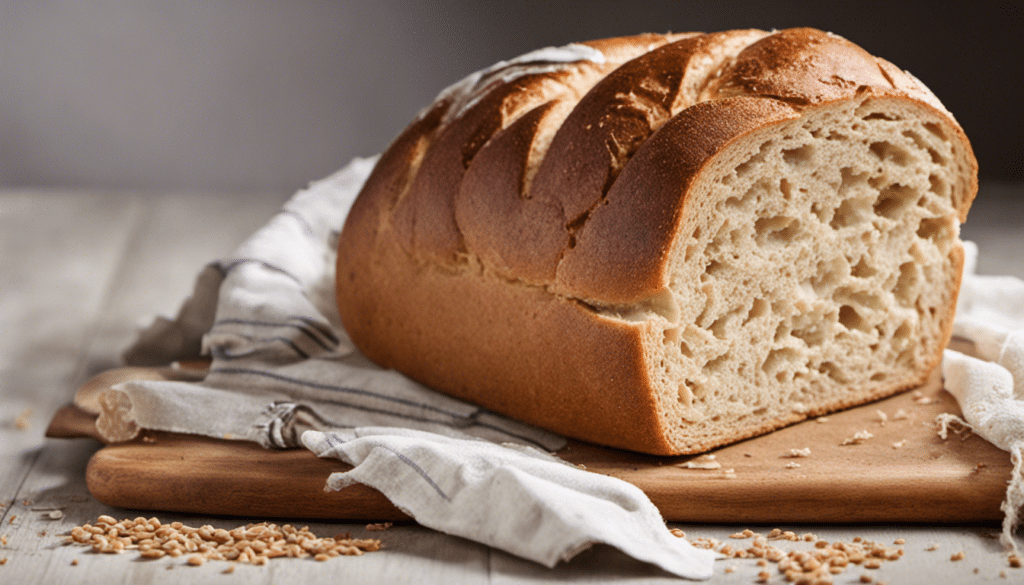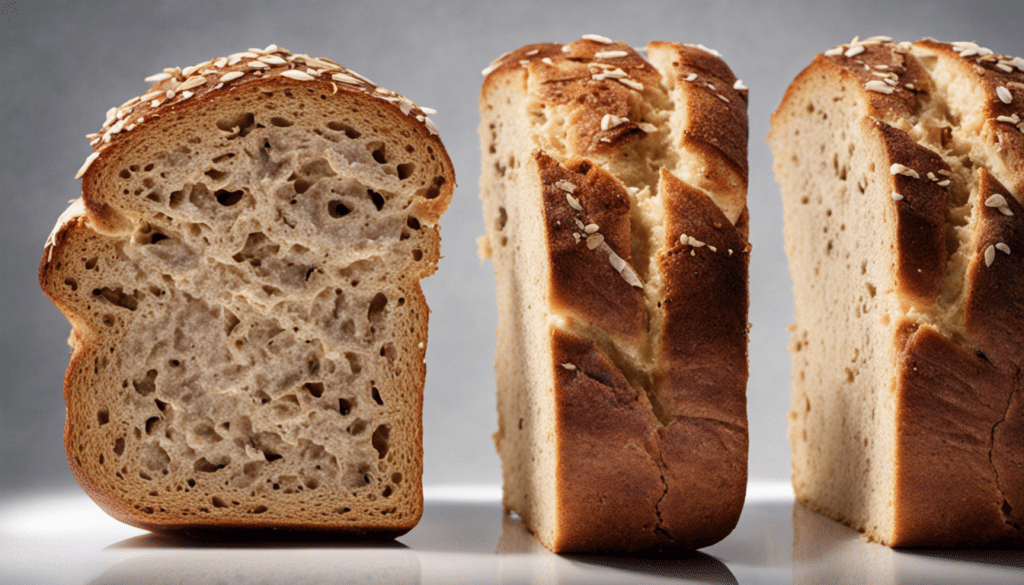| Prep: 20 mins | Cook: 30 mins – 35 mins | Difficulty: Intermediate | Serves: 6 |
| kcal | fat | saturates | carbs |
| 198 | 3g | 1g | 36g |
| sugars | fibre | protein | salt |
| 4g | 5g | 6g | 0.98g |
About Rye Bread
There’s something inherently comforting about cradling a warm, freshly-baked loaf in your hands, the aroma tickling your nostrils and tempting your tastebuds. Today, we’re taking a journey into the world of a bread that marries age-old tradition with rustic simplicity: Rye Bread. With its hearty flavors and distinctive texture, this cultivated bread variant has been a cornerstone in many cuisines across centuries. Whether dark or light, plain or seeded, rye bread never fails to offer an experience rich in wholesomeness and taste.
The Origins of Rye Bread
Rye Bread traces its humble beginnings to Central and Eastern Europe where it flourished in the colder climates. The endurance of rye in harsh weather conditions led to its widespread cultivation, making it a staple grain and a lifeline for bread production in regions like Russia, Poland and Scandinavia. From Danish Rugbrød to Russian Borodinsky, the myriad forms of rye bread continue to pervade the culinary scenes of these regions and beyond.
The Gustatory Profile of Rye Bread
Distinctively denser, darker, and more intensely flavored than its wheat-based counterparts, rye bread boasts a slight sourness and a robustly earthy character, making it a cherished base for numerous dishes. Depending on the combination of flours used, the crumb can range from light to dark, the flavor profile varying accordingly.
Adding butter and sugar to the mix, as in our recipe above, brings about a subtle complexity to the bread’s character. Complement it further with caraway seeds for a hint of anise-like notes and a dash of rolled oats for an alluring crunch on top – or enjoy as-is for its pure, robust rye essence.
Savoring Rye Bread
With its unique flavor and consistency, rye bread seamlessly enhances the taste of sandwiches like the iconic Reuben. Smoky, spiced corned beef, tangy sauerkraut, creamy Russian dressing, and melted Swiss cheese nestled within the hearty rye slices give this sandwich an unforgettable gastronomic appeal.
Equally, this bread asserts its versatility when served alongside hearty stews or aromatic soups, such as the rustic Hungarian Goulash or comforting Borscht. Furthermore, its high-fiber content and long-lasting satiability make it a sought-after choice for health-conscious gourmands.
In conclusion, there’s an undeniable allure to Rye Bread – an allure that lies in its rustic charm, its flavorful versatility, and the rich heritage it carries within each grain. Whether it’s a part of a gourmet dish or enjoyed by itself, every bite of this bread promises a delicious journey across Europe’s breadbaskets.
What You’ll Need
- 1 1/2 cups warm water (110 degrees F/45 degrees C)
- 1 1/2 tablespoons active dry yeast
- 1 1/2 tablespoons white sugar
- 1 1/2 tablespoons unsalted butter, melted
- 1 1/2 cups rye flour
- 1/2 tablespoon salt
- 2 1/2 cups bread flour, or as needed
- 1 1/2 tablespoons caraway seeds (optional)
- 1/2 cup rolled oats for topping (optional)
Method
Step One
Firstly, combine the warm water, active dry yeast, and white sugar in a large bowl. Stir these ingredients until they are well mixed. Let the mixture sit for about 10 minutes. This process will activate the yeast.
Step Two
Next, add the unsalted butter, rye flour and salt to the yeast mixture. Stir it well to make sure everything is combined.
Step Three
In the third step, slowly start adding the bread flour to the bowl. Add it a bit at a time while continuously mixing. Add until you have a dough that is slightly sticky but can be handled without sticking to your hands. It is optional to add caraway seeds. If you prefer, mix in the caraway seeds with the dough.
Step Four
Once your dough is ready, place it on a lightly floured surface and knead it for around 10 to 15 minutes or until it becomes smooth and elastic.
Step Five
After kneading, put the dough in a greased bowl and turn it over so that the top is also lightly greased. Cover the bowl with a clean towel and let the dough rise in a warm place. It should double in size and this process will take about 1 to 1.5 hours.
Step Six
Then, punch down the dough and shape it into a loaf. Place it in a greased loaf pan and let it rise again until it doubles in size. This will take roughly 30 to 45 minutes. Meanwhile, preheat your oven to 375 degrees F (190 degrees C).
Step Seven
For the final step, bake the loaf in the preheated oven for 30 to 35 minutes, or until the loaf sounds hollow when tapped. Optionally, you can sprinkle the loaf with rolled oats before baking. Allow the bread to cool before slicing and serving.




